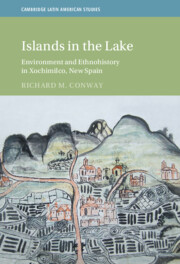Book contents
- Islands in the Lake
- Cambridge Latin American Studies
- Islands in the Lake
- Copyright page
- Dedication
- Contents
- Illustrations
- Preface
- Acknowledgments
- Introduction
- 1 Ecological and Political Landscapes
- 2 Land
- 3 Canoes and Commerce
- 4 Demography and Society
- 5 Crisis in the Seventeenth Century
- 6 Late Colonial Watersheds
- 7 Nahuatl Sources from Xochimilco
- Conclusion
- Glossary
- Bibliography
- Index
- Other Books in the Series (continued from page ii)
1 - Ecological and Political Landscapes
Published online by Cambridge University Press: 01 October 2021
- Islands in the Lake
- Cambridge Latin American Studies
- Islands in the Lake
- Copyright page
- Dedication
- Contents
- Illustrations
- Preface
- Acknowledgments
- Introduction
- 1 Ecological and Political Landscapes
- 2 Land
- 3 Canoes and Commerce
- 4 Demography and Society
- 5 Crisis in the Seventeenth Century
- 6 Late Colonial Watersheds
- 7 Nahuatl Sources from Xochimilco
- Conclusion
- Glossary
- Bibliography
- Index
- Other Books in the Series (continued from page ii)
Summary
The chapter traces the rise from the distant pre-contact past of the modified lake environment through the Post-Classic Period when the Native American peoples founded their altepetl, or city-states, until their conquest first by the Aztec Triple Alliance and then by Spaniards. The chapter covers the Spanish--Mexica War and demonstrates that it had vital a hydraulic dimension. While the siege of Tenochtitlan has long been understood as a naval battle, the analysis presented here follows the precedent of the New Conquest History in underscoring the contributions of Nahuas to the outcome of the conflict, particularly when it came to specialist knowledge of the Basin of Mexico’s hydrology and strategic efforts to defeat the enemies by turning the engineering works against them. The chapter concludes by tracing continuities into the mid-sixteenth century, especially with the survival of the altepetl and its foundation for colonial-era jurisdictions, including that of the cabildo, or town council, which Nahuas readily adopted and made their own. In so doing, they preserved control over the water management system even as they adapted to new colonial realities.
Keywords
- Type
- Chapter
- Information
- Islands in the LakeEnvironment and Ethnohistory in Xochimilco, New Spain, pp. 37 - 83Publisher: Cambridge University PressPrint publication year: 2021

